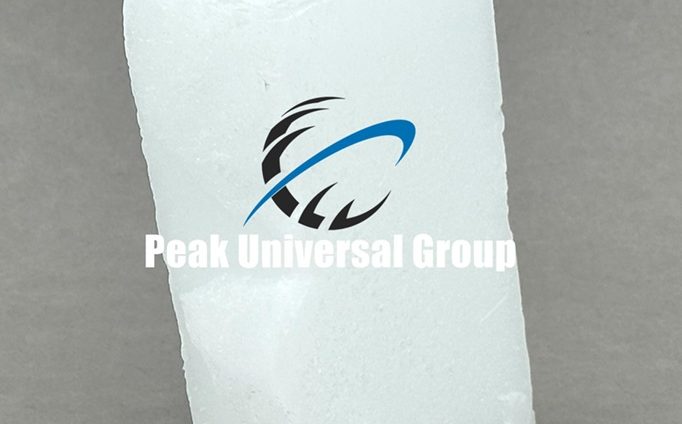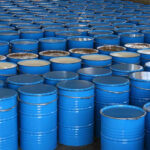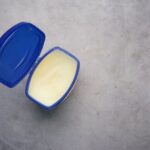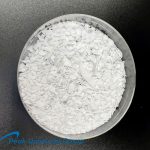
Paraffin Wax: Its Key Properties, Application & Benefits in Rubber Industry
Paraffin wax is one of the most important additives used in modern rubber compounding. It plays a crucial role in extending the lifespan of rubber products by protecting them from environmental degradation, improving flexibility, and enhancing processing performance.
Whether in tire manufacturing, industrial rubber goods, footwear, or molded components, paraffin wax remains indispensable due to its excellent anti-ozonant behavior, migration properties, and compatibility with both natural and synthetic rubbers.
This blog will delve into the role of paraffin wax in the rubber industry, exploring its benefits, specific applications, Manufacturing Process of Paraffin Wax and why Peak Universal Business is your trusted supplier for this essential material.
What is Paraffin Wax?
Paraffin wax is a highly refined mixture of saturated straight-chain hydrocarbons derived from petroleum. It appears as a white, odorless, hydrophobic solid that melts between 50–70°C, depending on the carbon-chain distribution.
Its stable chemical nature makes it suitable for:
-
Rubber compounding
-
Cosmetics
-
Packaging
-
Lubrication
-
Adhesives
-
Textile processing
For rubber applications, paraffin wax is typically supplied in flakes, slabs, or granules to ensure easy melting and controlled dosing.
Why Paraffin Wax Is Used in Rubber
Rubber—especially natural rubber—degrades when exposed to:
-
Oxygen
-
Ozone
-
UV radiation
-
Heat
-
Mechanical stress
This degradation leads to surface cracks, reduced elasticity, and ultimately premature product failure.
Paraffin wax acts as a protective barrier, helping rubber resist these damaging environmental effects.
Its key functions include:
A. Anti-Ozonant Protection
As rubber flexes, ozone can attack double bonds in the polymer chain, causing fine cracks known as ozone cracking. Paraffin wax prevents this by gradually migrating (blooming) to the surface and forming a thin, waxy film that blocks ozone penetration.
B. Improved Flexibility
Paraffin wax reduces stiffness and improves low-temperature flexibility, making rubber easier to process and more durable.
C. Reduced Tack and Friction
Wax reduces the tackiness of rubber compounds, helping during calendaring, extrusion, and molding.
D. Processing Aid
During mixing, melted wax improves filler dispersion and enhances flow, reducing mixing energy and improving consistency.
Key Properties of Paraffin Wax
1. Melting Point: Typically, between 46°C to 68°C (115°F to 154°F)
2. Density: About 0.9 g/cm³
3. Solubility: Insoluble in water, soluble in ether, benzene, and certain esters
4. Appearance: White, odorless, and tasteless
5. Form: Available in solid blocks, pellets, or flakes
Types of Paraffin Wax Used in Rubber
1. Low-Molecular Paraffin Wax (Short-Chain)
-
Faster bloom rate
-
Ideal for hot climates
-
Used in tire sidewalls, conveyor belts, and exposed rubber
2. High-Molecular Paraffin Wax (Long-Chain)
-
Slower bloom
-
Provides long-term protection
-
Suitable for tires used in moderate climates
3. Paraffin–Microcrystalline Wax Blends
-
Balanced migration rate
-
Excellent film continuity
-
Superior crack resistance
These blends ensure consistent protection across variable temperatures.
The Role of Paraffin Wax in the Rubber Industry
Paraffin wax plays a crucial role in the rubber industry, where it is used as a key ingredient in the manufacture of various rubber products. Its unique properties make it an indispensable component in rubber processing.
Benefits of Paraffin Wax in Rubber Applications
1. Anti-Ozonant Properties: Paraffin wax forms a protective layer on the surface of rubber products, preventing degradation caused by ozone exposure.
2. Improved Processability: It enhances the processability of rubber compounds, making them easier to mold and shape.
3. Enhanced Flexibility: Paraffin wax improves the flexibility of rubber products, making them more durable and resistant to cracking.
4. Reduced Stickiness: It reduces the stickiness of rubber compounds, facilitating easier handling and processing.
5. Moisture Barrier: Provides an effective moisture barrier, protecting rubber products from moisture-related damage.
Advantages of Paraffin Wax in Rubber Compounding
1. Excellent Ozone Protection
Paraffin wax forms a barrier that physically blocks ozone from attacking rubber surface chains.
2. Enhances Weather Resistance
It helps rubber withstand:
-
Ozone
-
Sunlight
-
Heat
-
Moisture
This improves outdoor performance significantly.
3. Acts as a Processing Aid
Wax reduces viscosity and improves flow during mixing and molding, leading to:
-
Shorter cycle times
-
Reduced energy consumption
-
Better filler dispersion
4. Improves Physical Properties
Rubber with wax exhibits:
-
Better flexibility
-
Longer fatigue life
-
Fewer cracks
-
Improved tensile properties
5. Increases Product Lifespan
The wax-bloom film offers long-term protection, especially in tires and conveyor belts.
Specific Applications of Paraffin Wax in the Rubber Industry
Paraffin wax is used in various stages of rubber manufacturing and in a wide range of rubber products. Here are some of the key applications:
1. Tire Manufacturing
One of the primary uses of paraffin wax in the rubber industry is in the manufacturing of tires. Tires are exposed to harsh environmental conditions, including ozone, UV radiation, and temperature fluctuations. Paraffin wax helps protect tires from these factors, ensuring longevity and performance.
Uses:
- Ozone Protection: Paraffin wax migrates to the surface of the tire, forming a protective layer that shields the rubber from ozone attack.
- Flexibility: Enhances the flexibility of the rubber, preventing cracking and extending the tire’s lifespan.
- Processing Aid: Improves the processability of tire compounds, making them easier to mold and shape during manufacturing.
Applications:
- Passenger Vehicle Tires: Used in the production of tires for cars, SUVs, and light trucks.
- Commercial Vehicle Tires: Essential in the manufacturing of tires for trucks, buses, and other commercial vehicles.
- Specialty Tires: Used in the production of specialty tires, including those for agricultural and industrial equipment.
2. Rubber Belts and Hoses
Paraffin wax is also used in the production of rubber belts and hoses, which are critical components in various industrial and automotive applications. These products require high flexibility, durability, and resistance to environmental factors.
Uses:
- Anti-Ozonant: Provides protection against ozone and UV radiation, preventing degradation and extending the life of rubber belts and hoses.
- Flexibility Enhancer: Improves the flexibility and elasticity of rubber compounds, ensuring reliable performance.
- Processing Aid: Facilitates easier handling and processing during manufacturing.
Applications:
- Automotive Belts and Hoses: Used in the production of timing belts, serpentine belts, radiator hoses, and other automotive components.
- Industrial Belts and Hoses: Essential in the manufacturing of conveyor belts, hydraulic hoses, and other industrial equipment.
3. Rubber Seals and Gaskets
Rubber seals and gaskets are used in a wide range of applications to prevent leakage and ensure a tight seal between two surfaces. Paraffin wax is used to enhance the properties of these rubber components.
Uses:
- Ozone Protection: Forms a protective barrier against ozone and other environmental factors.
- Improved Flexibility: Enhances the flexibility and durability of rubber seals and gaskets.
- Processing Aid: Facilitates easier molding and shaping during the manufacturing process.
Applications:
- Automotive Seals and Gaskets: Used in engine components, doors, windows, and other automotive parts.
- Industrial Seals and Gaskets: Essential in machinery, equipment, and piping systems to prevent leaks and ensure reliable operation.
4. Rubber Insulation
Paraffin wax is used in the production of rubber insulation materials, which are used to insulate wires, cables, and other electrical components. These materials require excellent insulating properties and resistance to environmental factors.
Uses:
- Moisture Barrier: Provides an effective moisture barrier, protecting insulation materials from moisture-related damage.
- Insulating Properties: Enhances the insulating properties of rubber compounds, ensuring reliable performance.
- Flexibility Enhancer: Improves the flexibility and durability of rubber insulation materials.
Applications:
- Electrical Wires and Cables: Used to insulate wires and cables in various electrical and electronic applications.
- Industrial Insulation: Essential in insulating machinery, equipment, and piping systems.
The Manufacturing Process of Paraffin Wax
Understanding the Manufacturing Process of Paraffin Wax can provide insights into its quality and properties. Here is an overview of how paraffin wax is produced:
1. Crude Oil Extraction
The production of paraffin wax begins with the extraction of crude oil from oil wells. Crude oil is a complex mixture of hydrocarbons and other organic compounds, which are separated and refined to produce various petroleum products.
2. Distillation
Once the crude oil is extracted, it undergoes a distillation process to separate it into different fractions based on their boiling points. This process takes place in a distillation tower, where the crude oil is heated, and its components are separated into lighter and heavier fractions.
3. Dewaxing
The heavier fractions from the distillation process contain paraffin wax. These fractions are further processed through a dewaxing process to remove the wax. Dewaxing can be done using various methods, including:
- Solvent Dewaxing: In this method, solvents such as methyl ethyl ketone (MEK) or toluene are used to dissolve the oil, leaving the wax behind.
- Pressing: This mechanical method involves pressing the oil to separate the wax.
- Chilling: The oil is chilled to precipitate the wax, which is then filtered out.
4. Refining
The separated wax undergoes refining to remove impurities and enhance its quality. The refining process includes:
- Sweating: A process where the wax is slowly heated to allow the oil to “sweat” out of the wax.
- Hydrogenation: Hydrogen is added to the wax to saturate any unsaturated hydrocarbons, making it more stable.
- Filtering: The wax is filtered to remove any remaining impurities and achieve the desired purity level.
5. Forming and Packaging
Manufacturing Process of Paraffin Wax, After refining, the paraffin wax is formed into the desired shapes, such as blocks, pellets, or flakes. It is then packaged and distributed for various industrial uses.
Factors to Consider When Selecting Paraffin Wax for Rubber
A. Carbon Chain Length Distribution
Determines bloom rate and temperature stability.
B. Melting Point
Needs to match the processing and service conditions.
C. Compatibility with Rubber Polymers
NR, SBR, BR, EPDM require different wax blends.
D. Climate Conditions
-
Hot climates → faster-bloom wax
-
Cold climates → slower-bloom wax
E. End Use Requirements
High-flex applications require stable, long-lasting bloom.
Paraffin Wax vs. Microcrystalline Wax in Rubber
Manufacturers often combine both waxes because:
-
Paraffin wax → Faster bloom
-
Microcrystalline wax → Stronger film, better adhesion
Together, they deliver a balanced anti-ozonant effect across variable temperatures.
Safety and Regulatory Considerations
Paraffin wax is considered safe and non-toxic for rubber applications. It is:
-
Chemically inert
-
Non-corrosive
-
Non-reactive
-
Environmentally stable
Most paraffin wax used in rubber meets ASTM and international quality standards.
However, manufacturers should handle molten wax with care and follow standard safety procedures.
Why Choose Peak Universal Business as Your Paraffin Wax Supplier?
When it comes to sourcing high-quality paraffin wax for the rubber industry, Peak Universal Business is your trusted partner. Here are some reasons why you should choose them as your supplier:
1. Quality Assurance: Peak Universal Business ensures that their paraffin wax meets stringent quality standards, providing you with reliable and consistent materials.
2. Competitive Pricing: They offer competitive prices without compromising on quality, ensuring you get the best value for your investment.
3. Reliable Supply Chain: With a robust supply chain, Peak Universal Business guarantees timely delivery, ensuring your projects proceed without delay.
4. Expertise and Support: Their team of experts is always available to provide guidance and support, helping you select the right products for your specific needs.
5. Customer Satisfaction: Committed to customer satisfaction, Peak Universal Business offers exceptional service and support, ensuring a seamless procurement experience.
Conclusion
Paraffin wax plays a vital role in the rubber industry. Its ability to migrate to the rubber surface and form a protective film makes it one of the most effective anti-ozonant and anti-aging additives available.
Its benefits include:
-
Enhanced rubber durability
-
Better resistance to ozone and weathering
-
Improved processing and flexibility
-
Longer product lifespan
From tire manufacturing to industrial rubber goods, paraffin wax ensures consistent performance, durability, and high-quality end products. As global demand for long-lasting rubber materials continues to grow, paraffin wax remains an essential component in modern rubber formulation.
By choosing Peak Universal Business as your supplier, you can be confident in receiving high-quality paraffin wax, competitive pricing, reliable delivery, and expert support.
Whether you need paraffin wax for tire manufacturing, rubber belts and hoses, seals and gaskets, or insulation materials, Peak Universal Business has the expertise and resources to meet your needs. Experience the difference in quality and service by partnering with Peak Universal Business for your paraffin wax requirements.
You can Read More about Paraffin Wax Here:
Paraffin Wax
Slack Wax for Rubber & Tire Industry
What is the role of Rubber Process Oil ?
What is Normal Paraffin & its Uses
If You have any other Query or Question you want to ask, Please don’t hesitate to Contact Us.
- 0 comment





Leave a Reply